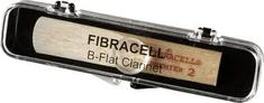 For years, I used natural reeds on clarinet and saxophone. I tried different brands, different strengths, different cuts - all of which changed every time I changed mouthpieces, of course - and invested a lot of time and even more money in the pursuit of the 'perfect reed'. The conclusion I've come to is twofold : 'there isn't one' and 'if there were, it would be called Fibracell'! After years of throwing out 1/4 of the reeds in a box, or sanding and trimming to save stuffy, poorly cut or worn out reeds, I gave up and tried Rico Plasticovers. They are definitely brighter, longer lasting and more free-blowing, but I found grading inconsistent and had trouble with 'chirping'. I tried Bari clear plastic reeds and found them durable, but tone was monochromatic and they were best outdoors or in a situation where tone wasn't as important, like marching band. Finally, I found Fibracell. These are a resin/Mylar composite that look and feel very much like natural cane, but the resemblance ends there! They are durable, consistent, don't require soaking, don't get soggy, don't split, crack, warp or squeak and are more free-blowing (important for Jazz and Commercial players who want a brighter, more open sound) than cane. Each reed costs about $14, but will last for months. Many pros and teachers now use them, and I've had good feedback from students as well as improved tone and performance in my playing. There are a couple of mitigating factors that need to be taken into consideration, however: 1) they run a little softer than cane reeds, anywhere from 1/2 to a full grade. So, your tenor sax 2.5 will become a 3, and your clarinet 3 may become a 4. And 2) I find the stiffness ratio of tip to heart is a little different than cane, so intonation and articulation will have to be adapted accordingly. Regular practicing over a period of a couple weeks should make for a good transition; I wouldn't take one out for the first time on a gig! I know these are more popular with saxophonists than clarinetists, but I recommend them to anyone looking for a more consistent, free-blowing reed. Especially for doublers, they can't be beat! Buy a couple in different grades, try them for a couple weeks and see if you don't notice an improvement in your tone and intonation. Then, throw away all those half-full boxes of half playable reeds and don't look back..
0 Comments
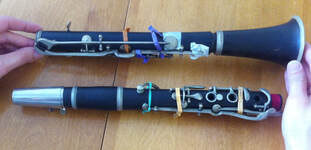 I buy most of my horns on eBay and have learned, through long and expensive experience, to examine every instrument with a fine toothed comb before purchasing! I've received cracked clarinets, plastic instead of wood clarinets, broken clarinets, clarinets with damaged or missing keys or rings, and even a clarinet that was made of pieces of 3 different clarinets! So, based on my experience and some of the customer horns I've been seeing lately (also purchased on eBay) I'd say its time for an eBay buying tutorial! First, I'd restrict my buying to the US and Canada unless you are fluent in another language and can afford to risk the high shipping. Mistakes can happen with overseas communication, and it can be much harder and more expensive to force a return if things aren't as represented! Second, look at feedback: while feedback can't tell you everything (with one negative, ebay's current policy of basing it on only the last year's transactions can make a small seller look worse than he/she actually is) it is a good place to start. Numerous negatives/neutrals and unflattering comments about misrepresented condition, poor communication, and high shipping can be a tip off that you aren't dealing with someone who is professional or honest - best to move on; lot of fish in the sea... Third, what does the ad show and tell you? Is it full of sharp pictures and copious details or a few badly taken pictures and a very skimpy description posted from a mobile phone? Is the person obviously knowledgeable and informative about the instrument, or just a garage sale picker looking for a quick sale at the highest price? Fourth, is there a return policy? Honest, knowledgeable sellers know that mistakes can happen, especially if they are selling something that they are not familiar with - I had to return a clarinet just a few weeks ago, as the ad failed to show or mention that the upper half of the bridge key was broken off and missing! Luckily, she was honest and pleasant about it, but I haven't always been so lucky. Ebay will sometimes assist you in forcing a return if an item has been misrepresented, but it is a troublesome process and they keep track of how often you use it: too many returns, and you risk losing access to the service, whether you are in the wrong or not! So, fifth and last - ask questions! Here are some of my favorites: 'Is the instrument in playable condition?' 'Are all pieces wood?' 'Do all pieces have logos that match?' 'Are there any cracks, chips, repairs, or any missing, damaged or frozen keys?' 'What is your return policy?' If you get what seem like thoughtful, honest answers, their feedback is in an acceptable range, and the photos look good, you are most likely safe to go ahead. If you receive no answer or something like "I know nothing about clarinets but it looks good to me" (one of my favorites) then be prepared to pass, or set a bid at a low price, or ask more questions. Also, avoid tunnel vision or 'gotta have it' syndrome: there are lots of clarinets for sale this week and there will be next week, too. If you're not a 100% percent satisfied with what you are looking at, look some more. Remember, its just a clarinet.... 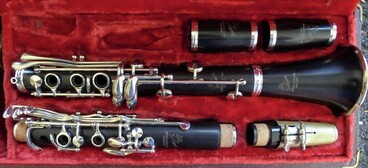 After years of refurbishing Penzel Mueller clarinets, I'm still amazed at the obscurity in which they linger! From a buying point of view, great: from a selling point of view, not so good. So, here's a little info to pique your interest in this unjustly forgotten brand. The company was started by 2 German immigrants, Penzel and Mueller, in the early 1890's in Long Island City NY. They offered a variety of clarinets and flutes, as well as some saxes and brass which I suspect were made by someone else and stenciled with the PM logo. If someone can shed more light, please do! The company operated through the late 1950's (as best I can determine), before ceasing production. Their clarinets (especially the Artist, Studio Recording, and Super Brilliante models) were top of the line horns, easily comparable to anything coming out of Europe during the period. Woody Herman played an Artist model, in fact. The tone was more 'American' than 'French' in concept - think Conn rather than Buffet - great for Jazz as well as concert music, free-blowing, more direct than sweet. Intonation is very good on most of the horns I've tried, and the key work is comfortable unless you have very small hands: there's a bit of a spread, which is welcome for us large fingered folk! A customer in Texas was kind enough to forward a model/price list from their 1955 catalog: Super Brilliante $340 Artist, new model $265 Empire $265 Bel Canto $185 American Professional $165 Soloist $149.50 Dyna-Tone $139.50 Standard Model $129.50 The only one I've worked on that I don't see here is the 'Studio Recording' model, which was a pro horn that came with 3 barrels. Perhaps it had been discontinued by 1955? Anyway, I hope this is enough to get you to keep an eye out for one of the better PM's in good playing condition. Regardless of the style you play, I believe you'd enjoy it. 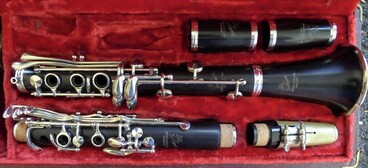 With the summer (Clarinet) shopping season upon us, it seems like a good time to broach the question: why should you spend your hard earned dollars on a vintage clarinet rather than a new instrument? Here are a few thoughts... 1) The retail markup has already been paid: Instead of $600+ for a new plastic or $1800+ for a new wood instrument, how about $400-800 for a fully refurbished intermediate or pro quality wood clarinet? The price represents the initial cost of a vintage instrument, shipping, overhaul (buffing, pads, cork, etc), photography, writeup and customer service time. You can speak directly to the technician that restored the instrument, who will take time to answer your questions and find the best horn and mouthpiece for you. Then, you can put the rest of your money back in the bank. 2) Quality materials: Instead of a body made of plastic or cheap dyed wood sporting plated, cast metal keys, you'll get well seasoned grenadilla wood of a quality rarely seen any more and solid nickel alloy keys hand silver-soldered for strength and durability. These old horns were built to last and will give you years of dependable service. 3) Quality construction: these horns were built by craftsmen with pride in their work, not just an eye for the bottom line. Many features that were once common, like post locks, solid nickel keywork and fittings, and extra keys to facilitate challenging passages are rarely seen except on the most expensive modern horns. Wood was seasoned in billet form for over a decade, rather than kiln dried and pressure treated with oil, minimizing cracking and extending horn life. Also, many old horns received more tuning time than modern budget instruments and still play well in tune after many years. I've sold more than a few high end vintage clarinets to players who subsequently sold their modern Buffets after comparing the two... 4) Environmentally friendly: nickel, petroleum products and grenadilla are all finite natural resources, and grenadilla trees, especially, are in short supply! Rather than continuing to mine and harvest to the point of exhaustion, why not refurbish all of the thousands of existing clarinets and get them into the hands of students, hobbyists, and pro players for a price they can afford? 5) More choices: instead of overpriced Buffets and Buffet clones, there were many fine makes, 50+ years ago, with distinct personalities. Thibouville Freres, SML, Leblanc, Couesnon, Penzel Mueller, Orsi and many more offered everything from small to extra large bore sizes, custom keywork, and tones from bright to dark and sweet to brazen. Players of Jazz, Klezmer, and various ethnic musics (as well as Classical and commercial) owe it to themselves to experience the range of sounds and feels available with vintage/antique horns and mouthpieces before settling for an expensive, mass produced modern horn. 6) USA made and played: all of these horns were bought or built here, refurbished here, and the money I earn stays here! How many of the big stores (and bigger websites) can say that? We need to move back to American goods and services to revive our economy and I'm happy to help. I could go on, but I think the point is made. Let me know your thoughts, experiences and wishes for the future - please just keep it concise and polite, as this is a public posting.... 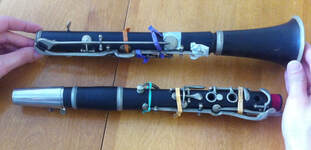 I buy most of my horns on eBay and have learned, through long and expensive experience, to examine every instrument with a fine toothed comb before purchasing! I've received cracked clarinets, plastic instead of wood clarinets, broken clarinets, clarinets with damaged or missing keys or rings, and even a clarinet that was made of pieces of 3 different clarinets! So, based on my experience and some of the customer horns I've been seeing lately (also purchased on eBay) I'd say its time for an eBay buying tutorial! First, I'd restrict my buying to the US and Canada unless you are fluent in another language and can afford to risk the high shipping. Mistakes can happen with overseas communication, and it can be much harder and more expensive to force a return if things aren't as represented! Second, look at feedback: while feedback can't tell you everything (with one negative, ebay's current policy of basing it on only the last year's transactions can make a small seller look worse than he/she is) it is a good place to start. Numerous negatives/ neutrals and unflattering comments about misrepresented condition, poor communication, and high shipping can be a tip off that you aren't dealing with someone who is professional or honest - best to move on; lots of fish in the sea... Third, what does the ad show and tell you? Is it full of sharp pictures and copious details or a few badly taken pictures and a very skimpy description posted from a mobile phone? Is the person obviously knowledgeable and informative about the instrument, or just a garage sale picker looking for a quick sale at the highest price? Fourth, is there a return policy? Honest, knowledgeable sellers know that mistakes can happen, especially if they are selling something that they are not familiar with - I had to return a clarinet just a few weeks ago, as the ad failed to show or mention that the upper half of the bridge key was broken off and missing! Luckily, she was honest and pleasant about it, but I haven't always been so lucky. Ebay will sometimes assist you in forcing a return if an item has been misrepresented, but it is a troublesome process and they keep track of how often you use it: too many returns, and you risk losing access to the service, whether you are in the wrong or not! So, fifth and last - ask questions! Here are some of my favorites: 'Is the instrument in playable condition?' 'Are all pieces wood?' 'Do all pieces have logos that match?' 'Are there any cracks, chips, repairs, or any missing, damaged or frozen keys?' 'What is your return policy?' If you get what seem like thoughtful, honest answers, their feedback is in an acceptable range, and the photos look good, you are most likely safe to go ahead. If you receive no answer or something like "I know nothing about clarinets but it looks good to me" (one of my favorites) then be prepared to pass, or set a bid at a low price, or ask more questions. Also, avoid tunnel vision or 'gotta have it' syndrome: there are lots of clarinets for sale this week and there will be next week, too. If you're not a 100% percent satisfied with what you are looking at, look some more. Remember, its just a clarinet.... Last week, I overhauled my first Buescher True Tone clarinet and found myself with many questions. Its a wonderful horn - well built of tight grained grenadilla wood and wide, solid nickel alloy keys, with a .595" bore. It has a big, open tone and good intonation (at least with my dubious skills)...but...did Buescher build this thing? Online research turned up no serial number list that seemed to correlate (the serial # was in the 17,000's) but I did find a reference suggesting that it may've been built by Penzel Mueller on contract!
Oddly, the build and serial would seem to bear this out: the serial number, instead of being cross-ways on the back of the lower stack, was incised longways on the side. Penzel Mueller was the only company I know of that did this, and the serial would date a PM to the late 30's/early 40's. Keywork seems to bear this out this age range, as the throat Ab/A has an adjustment screw and the LH pinky keys are mounted on separate posts. Also, the wide, flat rings are very reminiscent of PM's of the period. Finally, .595" is a pretty big bore for the period, but most PM Artist clarinets (their pro model) that I've worked on from the period have measured .595". Does anyone have information about True Tone clarinets that they'd like to share? This is such a good instrument that I plan to keep my eye out for one and would like to learn more in the meantime. It would be interesting and slightly ironic if Buescher, who made so many saxophones under so many names for others, had their better clarinets made by Penzel Mueller. But, given the quality of the latter's Artist model, I wouldn't be surprised at their choice... 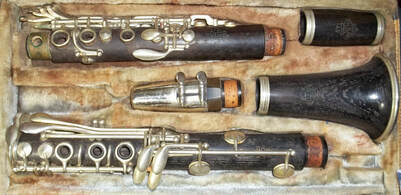 I buy most of my horns on eBay and have learned, through long and expensive experience, to examine every instrument with a fine toothed comb before purchasing! I've received cracked clarinets, plastic instead of wood clarinets, broken clarinets, clarinets with damaged or missing keys or rings, and even a clarinet that was made of pieces of 3 different clarinets! So, based on my experience and some of the customer horns I've been seeing lately (also purchased on eBay) I'd say its time for an eBay buying tutorial! First, I'd restrict my buying to the US and Canada unless you are fluent in another language and can afford to risk the high shipping. Mistakes can happen with overseas communication, and it can be much harder and more expensive to force a return if things aren't as represented! Second, look at feedback: while feedback can't tell you everything (with one negative, ebay's current policy of basing it on only the last year's transactions can make a small seller look worse than he/she is) it is a good place to start. Numerous negatives/ neutrals and unflattering comments about misrepresented condition, poor communication, and high shipping can be a tip off that you aren't dealing with someone who is professional or honest - best to move on; lots of fish in the sea... Third, what does the ad show and tell you? Is it full of sharp pictures and copious details or a few badly taken pictures and a very skimpy description posted from a mobile phone? Is the person obviously knowledgeable and informative about the instrument, or just a garage sale picker looking for a quick sale at the highest price? Fourth, is there a return policy? Honest, knowledgeable sellers know that mistakes can happen, especially if they are selling something that they are not familiar with - I had to return a clarinet just a few weeks ago, as the ad failed to show or mention that the upper half of the bridge key was broken off and missing! Luckily, she was honest and pleasant about it, but I haven't always been so lucky. Ebay will sometimes assist you in forcing a return if an item has been misrepresented, but it is a troublesome process and they keep track of how often you use it: too many returns, and you risk losing access to the service, whether you are in the wrong or not! So, fifth and last - ask questions! Here are some of my favorites: 'Is the instrument in playable condition?' 'Are all pieces wood?' 'Do all pieces have logos that match?' 'Are there any cracks, chips, repairs, or any missing, damaged or frozen keys?' 'What is your return policy?' If you get what seem like thoughtful, honest answers, their feedback is in an acceptable range, and the photos look good, you are most likely safe to go ahead. If you receive no answer or something like "I know nothing about clarinets but it looks good to me" (one of my favorites) then be prepared to pass, or set a bid at a low price, or ask more questions. Also, avoid tunnel vision or 'gotta have it' syndrome: there are lots of clarinets for sale this week and there will be next week, too. If you're not a 100% percent satisfied with what you are looking at, look some more. Remember, its just a clarinet.... 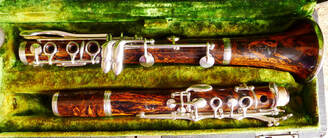 This blogpost is actually in response to a Facebook page comment on another question, but it occurred to me that people might like some tips on identifying the age of their clarinet, or one that they're planning to buy! If it is Albert or another fingering system, chances are its already an oldie, and most people aren't running into those, so I'll restrict myself to Boehm system - the most common system - for this post. The easiest way to date a horn is by serial number: all the major (and some minor) makers have serial number lists available on Google. If you have a Buffet, Selmer, or Leblanc its a piece of cake...or is it? Buffet serial numbers before the 1930's are a confusing hodgepodge of letters and numbers: does J134 come before 134J or after? Selmer numbers start, dependably, around 1929...before that, good luck! Leblanc lost decades of records in a factory fire, so anything before 1964 is guesswork based on model and ... KEY WORK. Key work is your friend when it comes to identifying an older Boehm system clarinet. Its often a combination of more than one thing, but this will get you started : 1) Material - Before the 1960's, most instruments had keys made of solid nickel alloy, silver soldered together by hand for strength. This gets pretty oxidized with age, but will shine up like a new penny over and over again with buffing. Later work can be cheaper metal keys with nickel plating, or even cast pot metal - of which horror I shall not speak! I shouldn't have to tell you which of these sets of solid nickel keys is the Before photo... There are a few exceptions, (like Conn, which was doing good plating before WWII), but generally, if you see grey-green oxidized nickel alloy like the above, you're looking at the 1950's or earlier. 2) The A/Ab crossover - the earlier the clarinet, the more likely that there is no adjustment screw. Earlier horns just have the arm with no screw: I think early makers wanted to keep musicians from messing with the adjustments, but that's a private theory - please don't repeat it! :-P 3) LH pinky keys mounted on one post instead of 2 - You rarely see this after about 1930. I don't know the reason for the change, although the early design can be harder to swedge if it gets loose from wear. 4) Leaf springs under keys - most makers use needle springs mounted in a post on all keys now, but earlier horns often had flat leaf springs (mounted on the key) on upper stack C# and lower stack F#. This also starts to disappear in the late 20's/early 30's and, again, I'm not sure why. If you have an Albert or Simple system instrument, you'll see leaf springs on many keys, or sometimes all - that's an oldie! There are other tricks, (like wood and case design), but those are the easiest for the layperson. Hope they help!
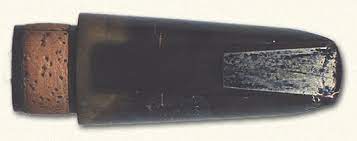 I frequently receive old mouthpieces with every clarinet I buy, and I like to clean them and put them up for sale: some are collectible/desireable and others are just well made old mouthpieces that might be of use to someone wishing to save some money over a new mouthpiece. The main problem is - they often look terrible! Crusty...discolored...tattered cork...who would want that?! Well, it turns out that cleaning up an old mouthpiece isn't that hard, so I'm going to share my experience: Here's a recent set of untreated vintage mouthpieces - pretty ugly! 1) Start by washing - the rest of the process will work best if you remove any greases and oils. I use mild dish detergent, COLD water and an old toothbrush. A drop of soap on the brush, scrub inside and out, rinse. Why COLD? Hot water is the fastest way to turn that old hard rubber mpc green! 2) Soak in vinegar - the acetic acid will dissolve any mineral buildup and soaking (10-15 min on average) will help loosen any remaining stubborn gunk. More toothbrush scrubbing after this...Repeat as needed. 3) Rub with 3 in 1 oil - this trick rejuvenates the hard rubber and removes much or all of the age discoloration. Put a drop on the mouthpiece, rub thoroughly with fingers. Let sit for a couple days - you'll see darkening and increased shine - repeat if needed. 4) Rub with a polish cloth, gild logos with a gold crayon, and recork - polishing will remove the last of the oil and heighten shine, gold crayon will make faded logos pop, and corking will complete visual cleanup and make the mouthpiece suitable for use by the next owner! I generally use 3/64" sheet cork and 3M rubber cement.
As you can see from the photo below, its an amazing improvement from the original condition! However, if you don't see all the green oxidation disappear, just let it go. I haven't found any process that will get all of it, except buffing with compound...and you have to be GOOD at that not to ruin the mouthpiece! Let it be a little green... 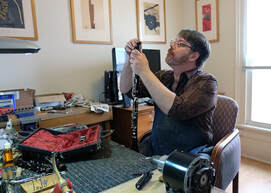 Occasionally, people will ask about the difference, and why an overhaul costs more. Here's my best answer: On a newer plastic student horn, a re pad might only include dis-assembly, washing the body, quickly hand-ragging the keys, replacing missing corks, replacement of all pads, reassembly and adjustment: about a 2 1/2 hour job for about $180. For an instrument with fresh tone-holes, snug posts, tight mechanism, shiny nickel plated keys and recent springing this might be sufficient, especially if its going into the hands of an 11 year old of indifferent ability. An overhaul, on the other hand, would include everything necessary to return the instrument to as close to 'like new' play-ability as is feasible (sometimes extraordinary measures are not justified by the value of the instrument), and address the preferences of the more advanced player in question. This might include: Swedging/countersinking the key-work to remove lost motion, re-facing of tone-holes to assure optimal pad seat, tightening of posts, replacement of all cork (including adjustment of opening height to regulate tone and intonation), thorough oiling of body, buffing of body, posts and keywork, polishing of the bore, straightening or leveling of bent keys, key cups and rods, realignment of keys with tone holes, replacement of weak springs, repair of small cracks or chips, installation of a mix of high quality double bladder/leather and cork pads, reassembly and adjustment, and re-gilding the logos! Total of 6-10+ hours depending on age, complexity of mechanism, and condition. Many techs who routinely repair only band grade instruments have neither the time, the knowledge, nor the specialized tools to complete all these tasks, and little incentive to acquire them: At the $60 an hour that the average shop currently charges (plus supplies), a $600 bill wouldn't be out of the question and few customers are discerning or serious enough to make this kind of commitment to their instrument. Trying to explain why all this is necessary frequently got me looks suggesting that I was peddling Snake Oil: We are, after all, a nation of bargain hunters, and quality work is no bargain! However, once your older instrument has been thoroughly overhauled in this manner, you can be assured that, not only is it playing its best, but that it will require little maintenance other than oiling and adjustment for years to come! |
Archives
February 2024
AuthorThe Licorice Shtick Blog is the creation of the Vintage Clarinet Doctor, a Winston Salem, NC based woodwind instrument repair shop specializing in vintage and antique clarinets, saxophones, and the occasional flute. Categories |
- Home
- Before and After
- Contact Us
- Learn
-
Shop
-
Clarinets
>
- Vintage A. Bonneville Albert System Clarinet
- Vintage Jean Cartier Professional Bb Boehm Clarinet
- Vintage Conn 424N Bb Boehm Clarinet
- Vintage Couesnon & Cie A Paris Bb Boehm Clarinet
- Vintage Louis Delmat Bb Albert System Clarinet
- Vintage R. Malerne Custom Bb Boehm Clarinet
- Vintage Malerne Professional Bb Boehm Clarinet
- Vintage R. Malerne Standard Bb Boehm Clarinet
- Vintage Paris Selmer Eb Contra Alto Clarinet
- Vintage Stubbins Noblet Bb Boehm Clarinet
- Flutes >
- Mouthpieces
- Saxophones >
-
Clarinets
>
- Services
- Testimonials
- Home
- Before and After
- Contact Us
- Learn
-
Shop
-
Clarinets
>
- Vintage A. Bonneville Albert System Clarinet
- Vintage Jean Cartier Professional Bb Boehm Clarinet
- Vintage Conn 424N Bb Boehm Clarinet
- Vintage Couesnon & Cie A Paris Bb Boehm Clarinet
- Vintage Louis Delmat Bb Albert System Clarinet
- Vintage R. Malerne Custom Bb Boehm Clarinet
- Vintage Malerne Professional Bb Boehm Clarinet
- Vintage R. Malerne Standard Bb Boehm Clarinet
- Vintage Paris Selmer Eb Contra Alto Clarinet
- Vintage Stubbins Noblet Bb Boehm Clarinet
- Flutes >
- Mouthpieces
- Saxophones >
-
Clarinets
>
- Services
- Testimonials
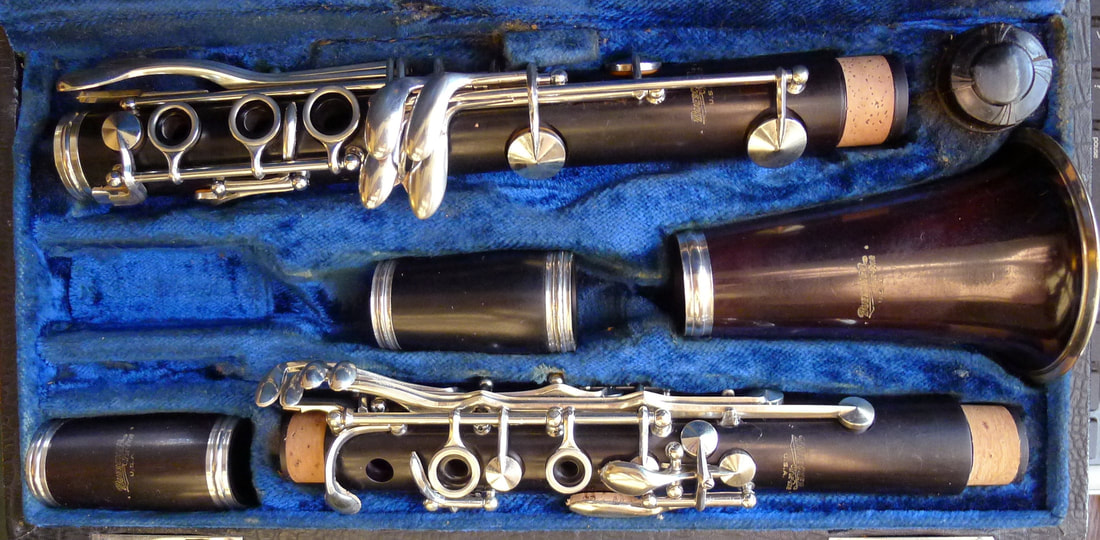
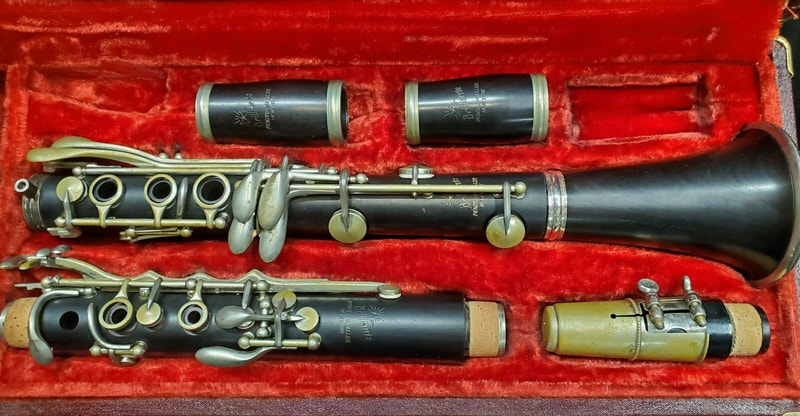
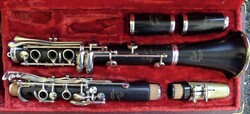
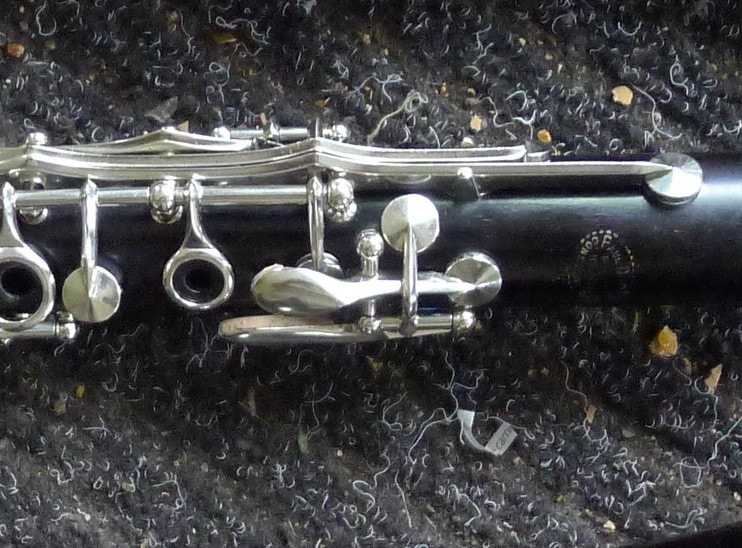
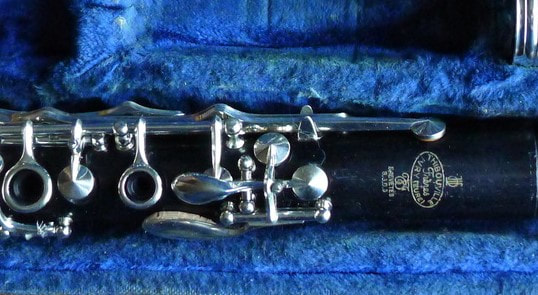
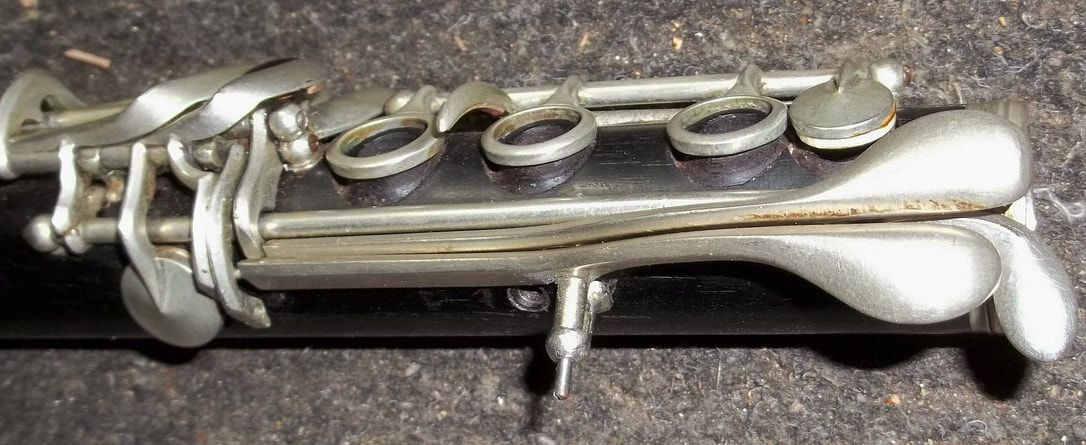
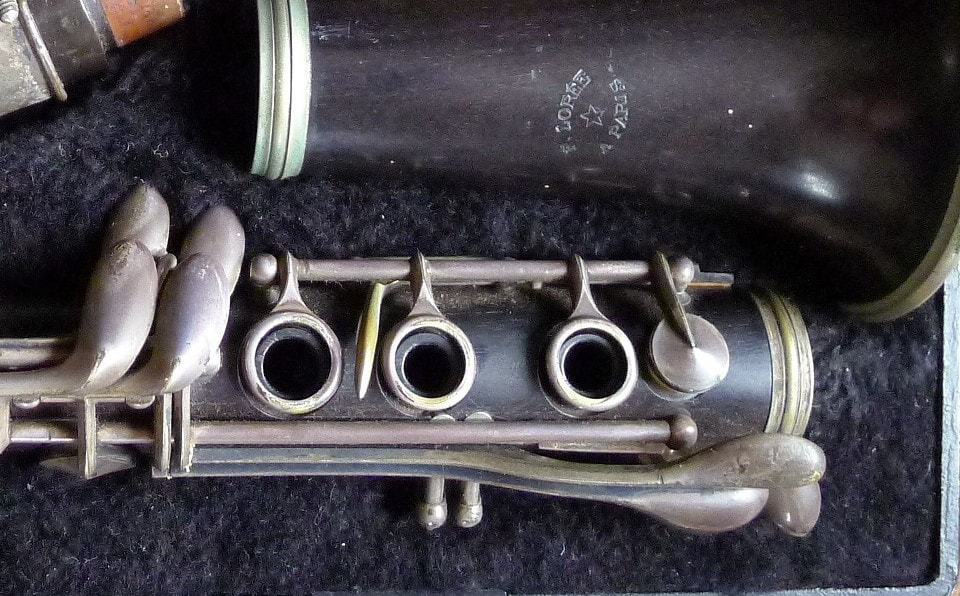
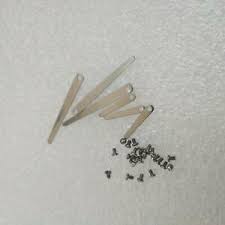
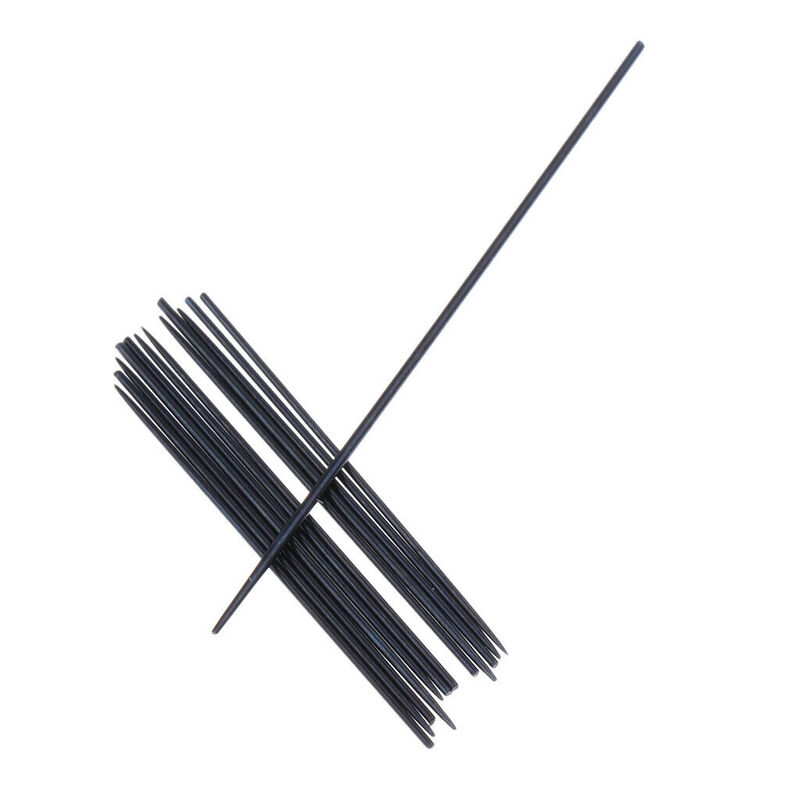
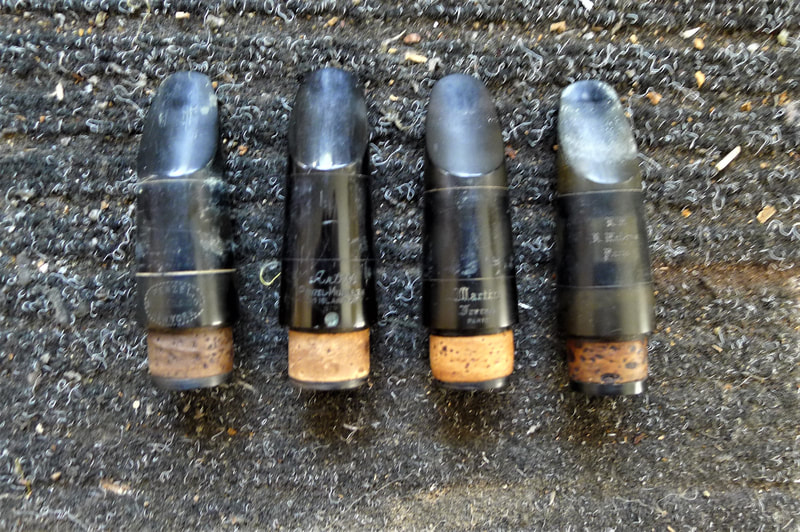

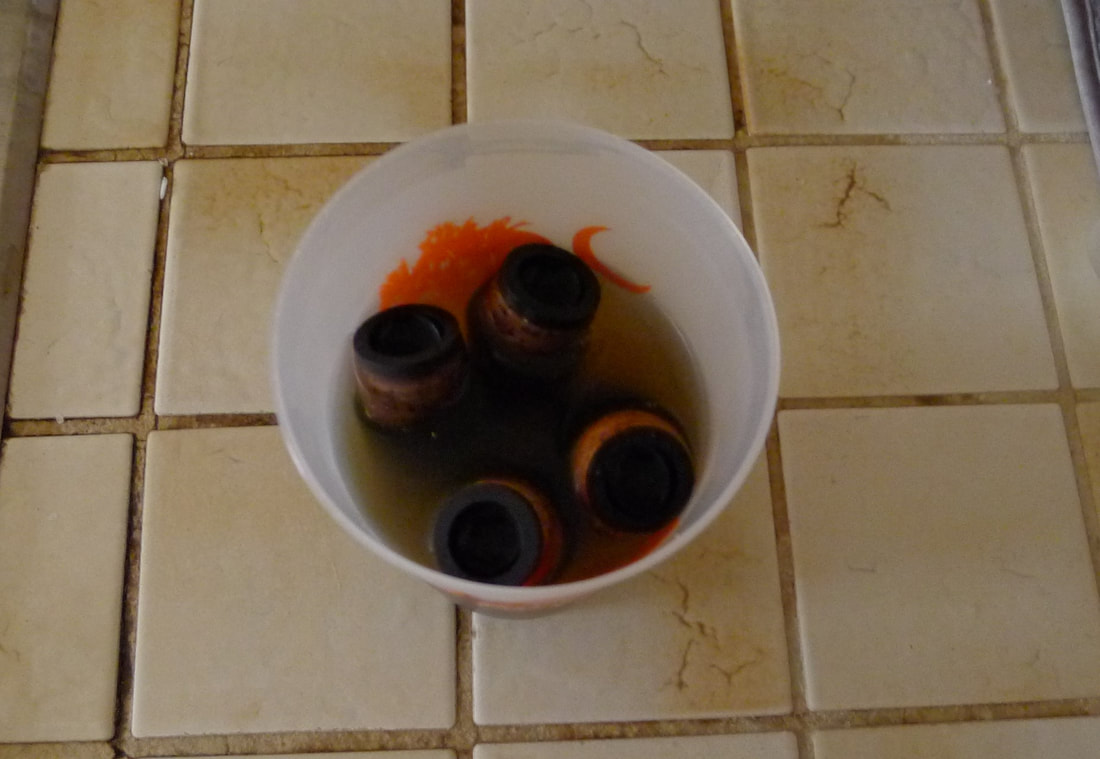
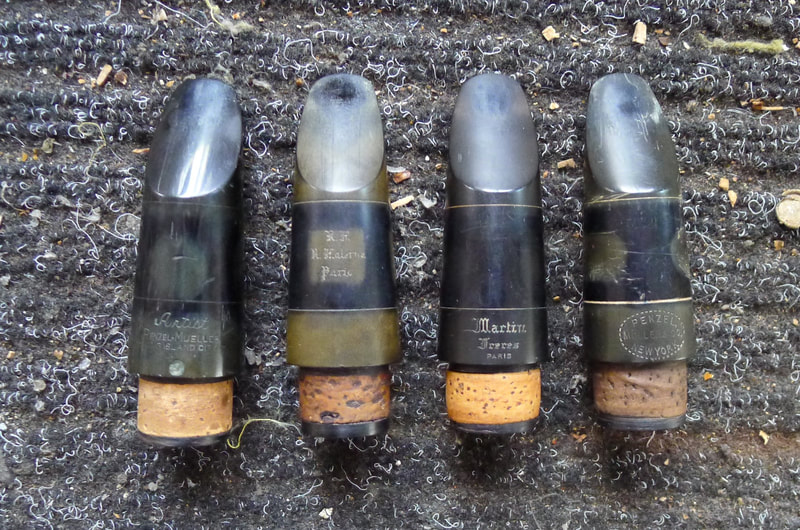
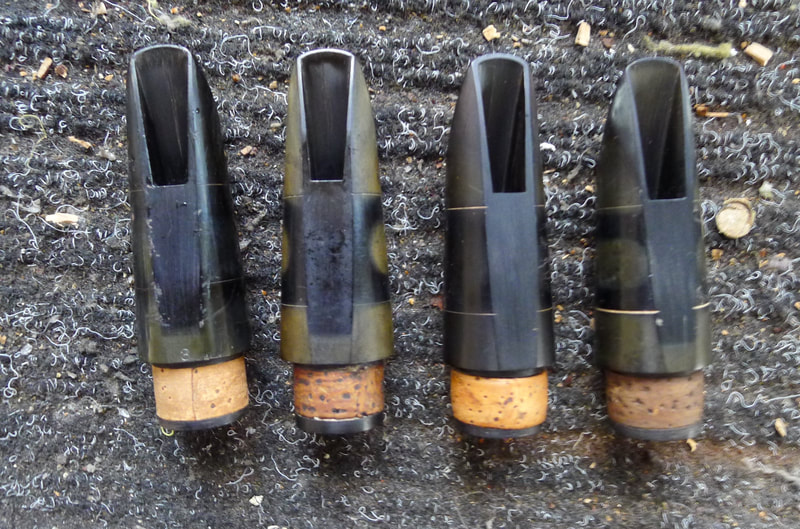
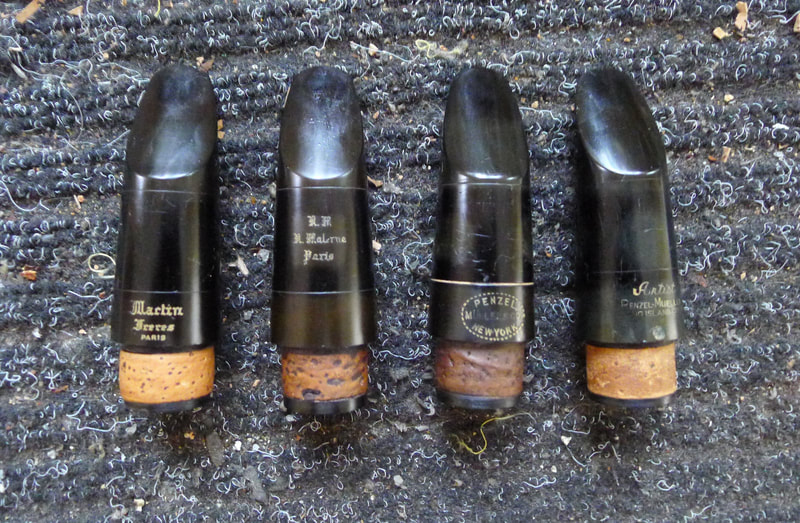
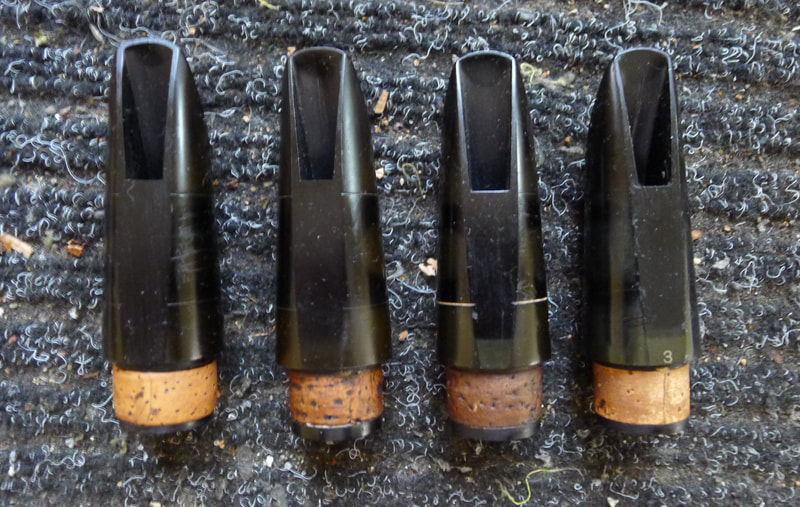
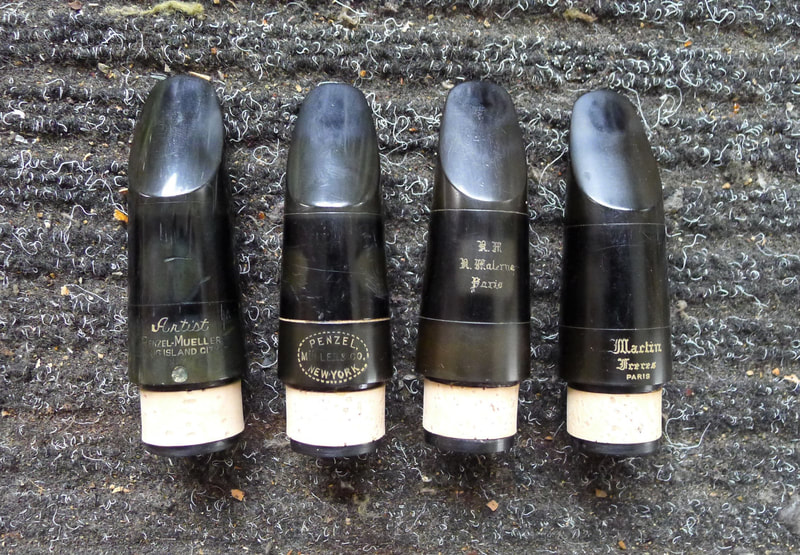
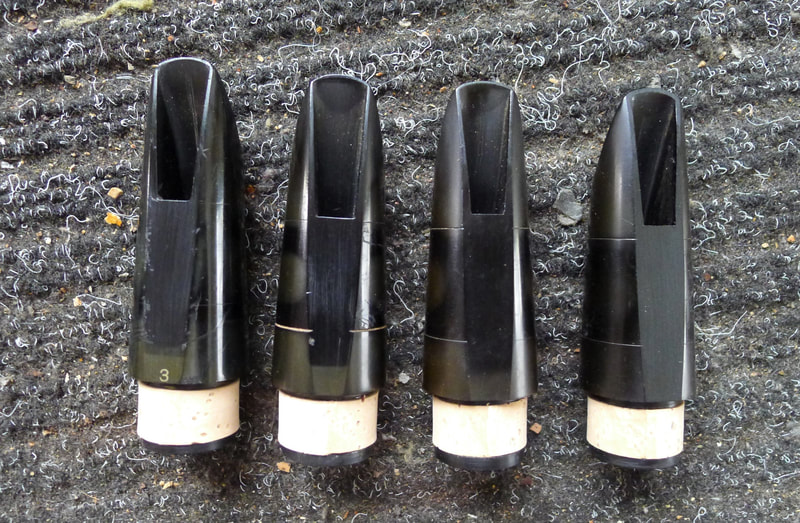
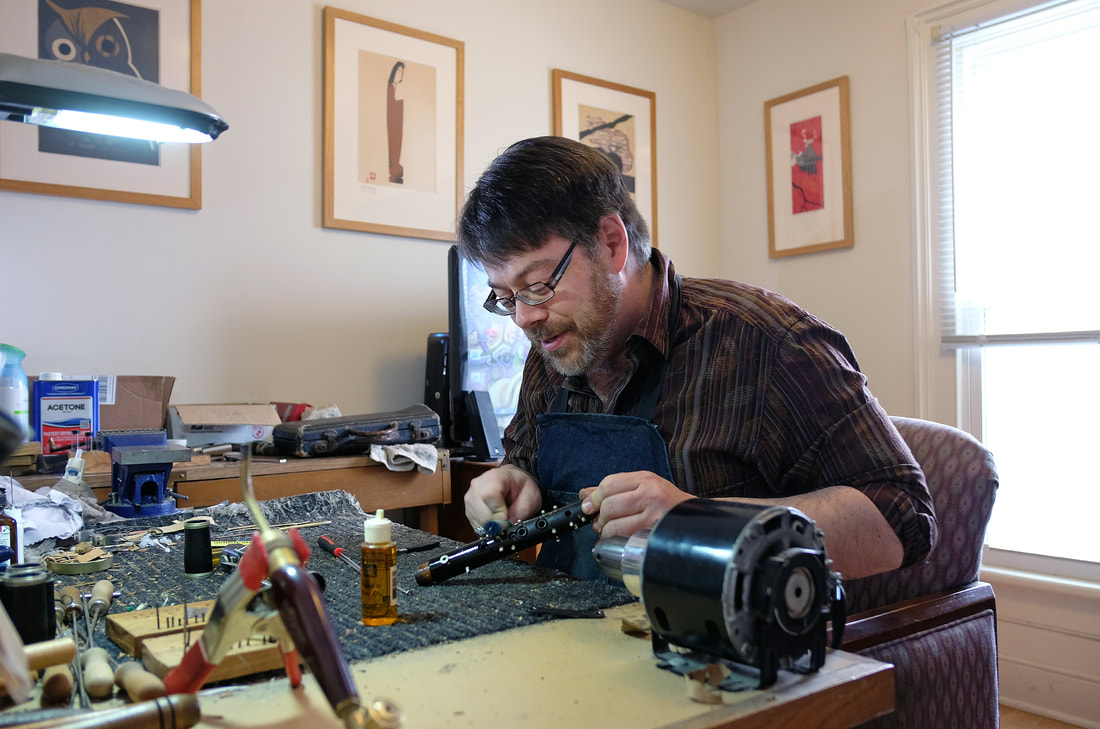
 RSS Feed
RSS Feed
